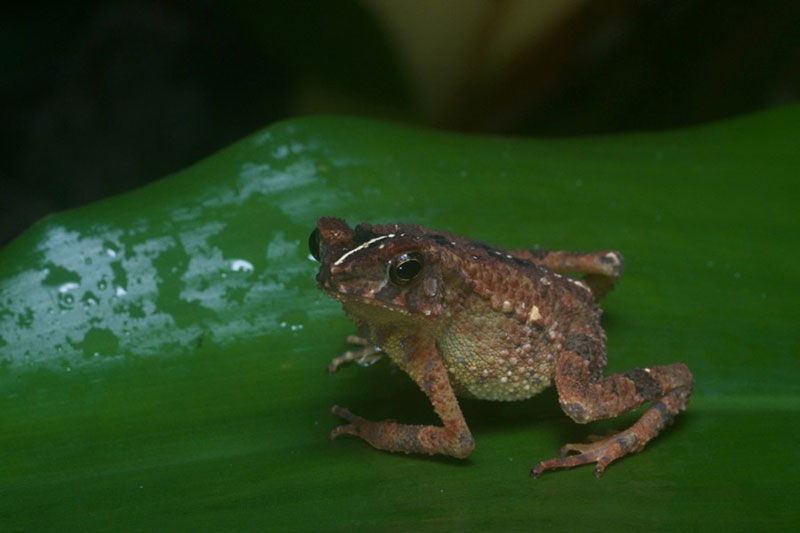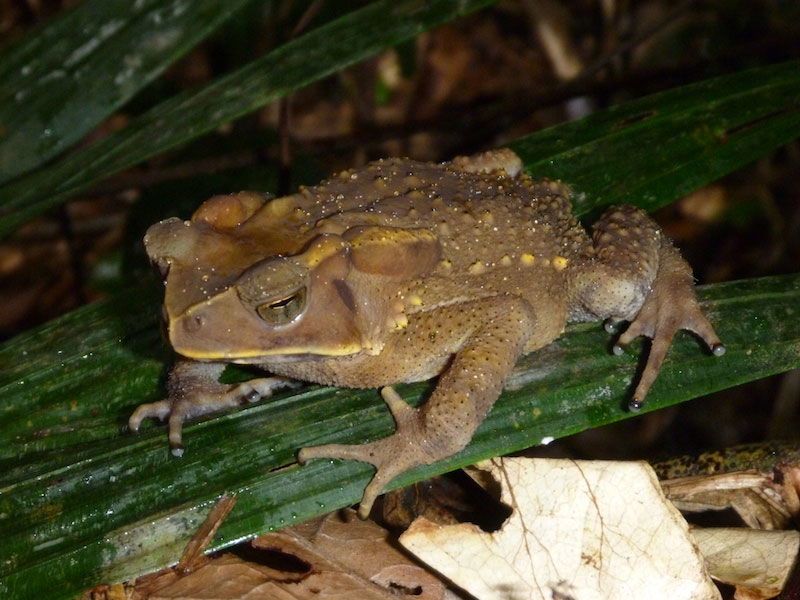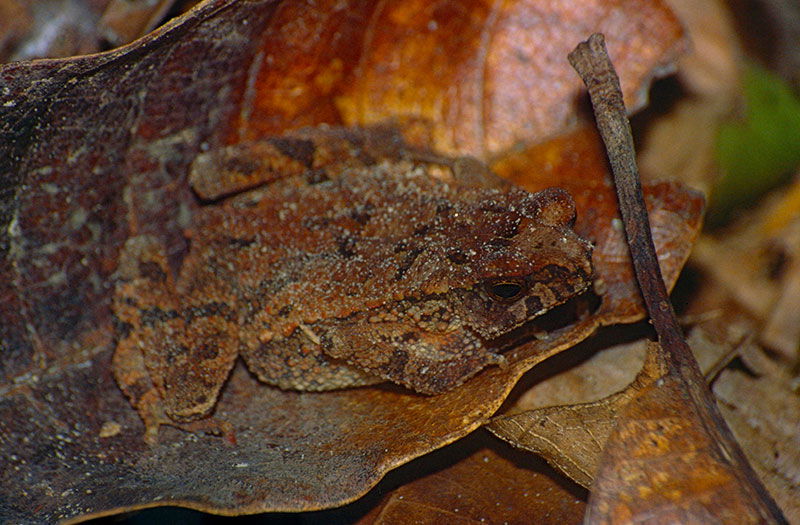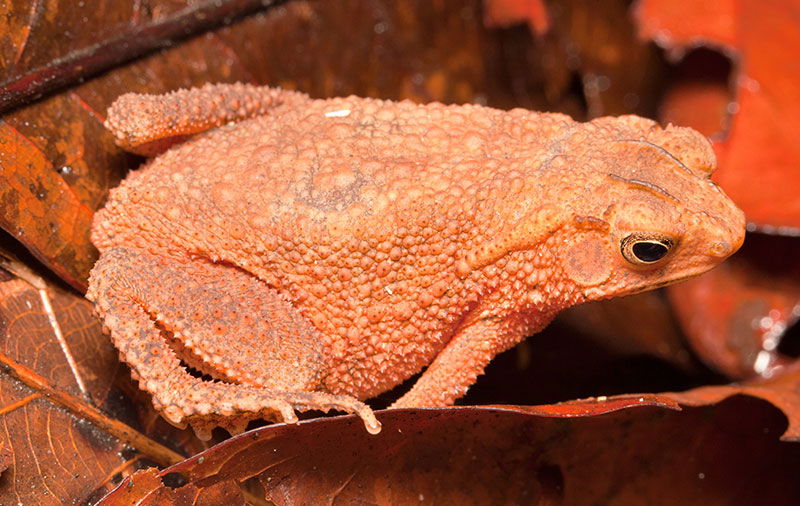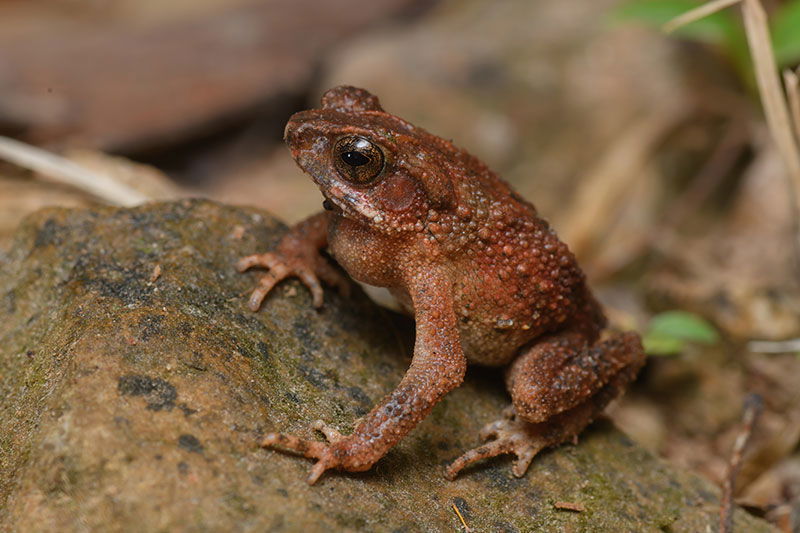Gollum Toad
Bernard DUPONT from FRANCE, CC BY-SA 2.0, via Wikimedia Commons
Ingerophrynus
on June 25, 2024Hey kids, welcome back to our series on the mysteries of created kinds.
This week, we head to Southeast Asia looking for a small frog genus. Several species of this kind are endangered or threatened.
Because these toads are so small, only a few inches, they must find ways to avoid being eaten by the many predators in their habitats. One species tries to fool predators by crouching, making itself bigger by sucking in air, or thanatosis.1 Thanatosis means playing dead. So the frog pretends to be dead, hoping the predator will leave it alone.
When not hiding from predators, these toads like to eat. The food of choice seems to be things like ants and other members of order Hymenoptera, but other insects like termites and beetles are also on the menu.2 While that may not sound tasty to you, to a frog, ants are like popcorn: they can’t get enough.
Because many of these species used to be classified in another genus, very little information comes up when you try to research them, so I don’t expect anyone to have figured this out. This week’s kind is the Ingerophrynus—the Philippine toad kind. I prefer to call them the Gollum toads because a species within the kind is named the Gollum toad—much more interesting. Next week, we migrate back to North America looking for a strange group of lizards.
Try out this fun crossword!
Clue
Your clue for the week is:
There are two living subfamilies of this kind. One either lacks limbs entirely, or they are very small, while the other looks like a normal lizard.
Ask a Question
Have you ever had a question about created kinds but didn’t know who to ask? Have you ever wanted to learn more about your favorite kind? Well, now you can! You can ask me, Inspector Barry Mins, a question! Have your parents help you fill out this form, and you might get your question answered in my column! If you have any questions about created kinds, feel free to send them my way!
Footnotes
- Shahrudin Shahriza, “Antipredator Mechanisms of Ingerophrynus parvus (Boulenger, 1887) (Anura, Bufonidae) and Philautus vermiculatus (Boulenger, 1900) (Anura, Rhacophoridae) from Northern Peninsular Malaysia,” Alytes 35, no. 1–4 (2018): 48–56, Google Scholar.
- Chee hui Yap and Ibrahim Jaafar, “Stomach Content Analysis of Tropical Forest Toads Ingerophrynus parvus and Phrynoidis aspera (Anura: Bufonidae) from Kedah, Malaysia,” Proceedings of the Taxonomy and Ecology: Beyond Classical Approaches Conference (2011): 221–225, https://www.researchgate.net/profile/Chee-Hui-Yap/publication/305231638_Stomach_Content_Analysis_of_Tropical_Forest_Toads_Ingerophrynus_parvus_and_Phrynoides_aspera_ANURA_BUFONIDAE_from_Kedah_Malaysia/links/5785b95808ae36ad40a4c77f/Stomach-Content-Analysis-of-Tropical-Forest-Toads-Ingerophrynus-parvus-and-Phrynoides-aspera-ANURA-BUFONIDAE-from-Kedah-Malaysia.pdf.
- © 2024 Answers in Genesis
- Privacy Policy
- Contact
- About

